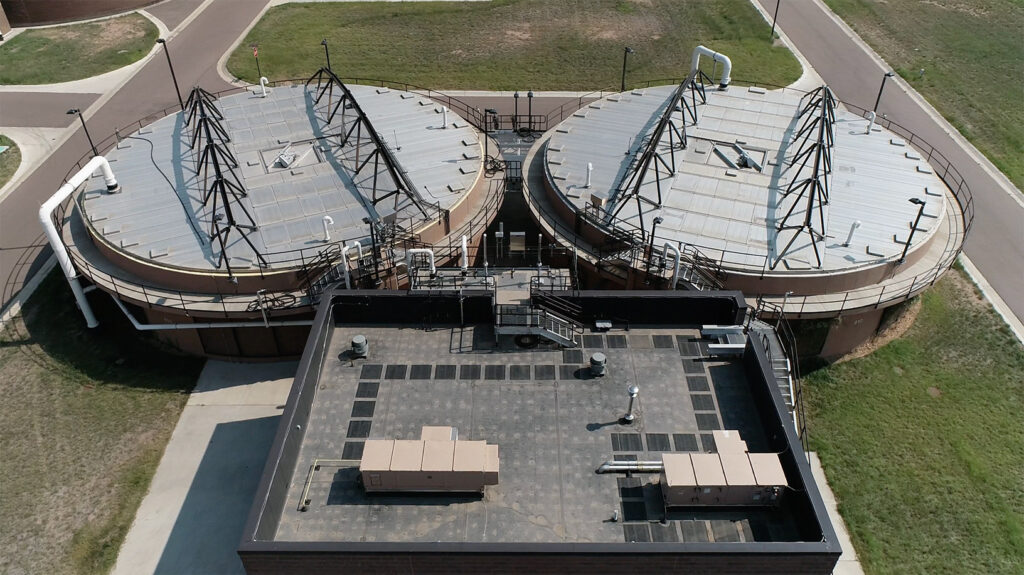Primary Treatment
Primary treatment redirects Biochemical Oxygen Demand (BOD) and Total Suspended Solids (TSS) in the liquid stream to the solids stream, redirects carbon to digestion for biogas production, and reduces capacity requirements for the secondary process.
After passing through preliminary treatment, the flow arrives at primary treatment. The purpose of primary treatment is to settle materials in a large tank referred to as a clarifier. This process uses gravity separation to remove readily settleable solids and organic material to reduce loading to the secondary treatment process. The primary contaminants removed in this process are BOD and TSS.
The settled solids are collected from the bottom of the clarifier and pumped to the Gravity Thickeners (GVT), while fats, oils, and grease (FOG) are skimmed from the surface. Heavier organic materials are settled and removed as sludge.

Metro utilizes circular primary clarifiers in the primary treatment process.
Primary Clarifiers at RWHTF
The grease is transferred to the Grease Processing Facility. This facility concentrates and heats the grease, and pumps this stream to the anaerobic digesters.
Primary Clarifiers at NTP
Grease is either pumped to and handled at the RWHTF plant or sent to the anaerobic digesters without additional treatment. The treated primary effluent then flows to secondary treatment.

Water Quality
Hover over the bar graphs below to see how much of the pollutant was removed during a previous treatment process, how much was removed during this treatment process, and how much is left to be removed in a future treatment process.
Key:
Previously removed pollutants from prior processes
Amount of pollutants actively being removed by the current process
Remaining amount of the pollutant
